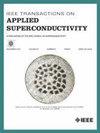A Novel Topology With the Combination of Superconducting Magnet and Permanent Magnet for the Propulsion Motor of eVTOL Aircraft
IF 1.7
3区 物理与天体物理
Q3 ENGINEERING, ELECTRICAL & ELECTRONIC
引用次数: 0
Abstract
The high-temperature superconducting (HTS) tape can bring significant improvement to the performance of electric vertical take-off and landing (eVTOL) aircraft's propulsion motor. However, it requires cryogenic environment to function normally, which causes a huge amount of cryogenic loss. Meanwhile, the motor outputs different levels of torque during a flight mission and the difference can be up to tens of time. In this paper, permanent magnet auxiliary excitation structure (PMAES) is investigated for eVTOL aircraft's propulsion motor. In the proposed design, superconducting magnet (SM) is utilized as main excitation unit to achieve a higher torque density while permanent magnet (PM) is adopted to form PMAES. SM and PMAES operate during machine's high-load condition, and SM is shut off during the low-load condition to eliminate loss caused by the operation of SM's current lead. With such a structure, the HTS material can be utilized to extract the optimal performance of the machine while reducing the cryogenic losses when possible. Four topologies with PMAES are studied, and it is found axial flux superconducting machine (AFSCM) with radial permanent magnet auxiliary excitation structure (RPMAES) has the best performance and ability to significantly reduces the energy consumption of the motor during a complete flight mission.求助全文
约1分钟内获得全文
求助全文
来源期刊

IEEE Transactions on Applied Superconductivity
工程技术-工程:电子与电气
CiteScore
3.50
自引率
33.30%
发文量
650
审稿时长
2.3 months
期刊介绍:
IEEE Transactions on Applied Superconductivity (TAS) contains articles on the applications of superconductivity and other relevant technology. Electronic applications include analog and digital circuits employing thin films and active devices such as Josephson junctions. Large scale applications include magnets for power applications such as motors and generators, for magnetic resonance, for accelerators, and cable applications such as power transmission.
 求助内容:
求助内容: 应助结果提醒方式:
应助结果提醒方式:


